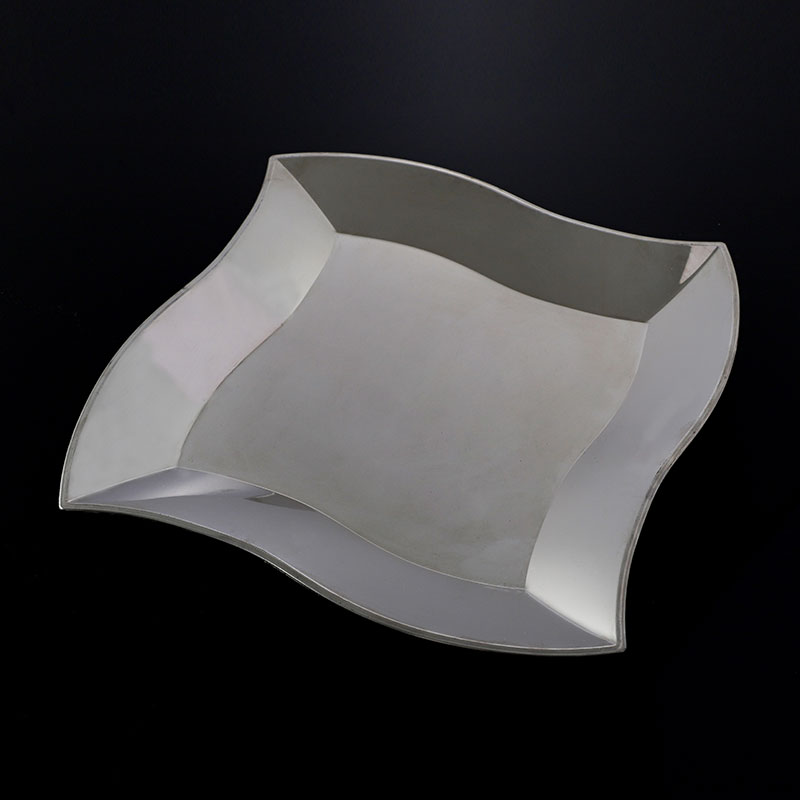What materials are glossy metallic plastic irregular plate made of?
2025-06-13
As a common utensil in our daily dining, the choice of materials used to make glossy metallic plastic irregular plate directly affects the characteristics, safety and use of the product. The most common material is polystyrene (PS), which is relatively low in cost and easy to process and shape. The finished plastic plates are often crystal clear or bright in color, with a relatively stiff texture, which is very suitable for cold food, snacks or disposable scenes, such as parties or takeouts. However, it should be noted that it has poor high temperature resistance, and contact with overheated food may cause deformation or even precipitation of harmful substances.
Another widely used material is polypropylene (PP), which is favored for its excellent heat resistance (usually able to withstand temperatures above 120°C), good toughness and chemical stability. Plastic plates made of PP material are flexible and not easy to break, making them one of the ideal choices for heating food in microwave ovens. They are not easy to age and become brittle after repeated cleaning and disinfection, and are very practical.
In addition, polyethylene terephthalate (PET) is occasionally used to make transparent glossy metallic plastic irregular plate. It also has good transparency and mechanical strength, but is slightly inferior to PP in terms of oil resistance and heat resistance. It is more common in specially designed fruit plates or cold cuts. In a few cases, more durable engineering plastics such as polycarbonate (PC) are used to make advanced plastic plates, but this is not common.





